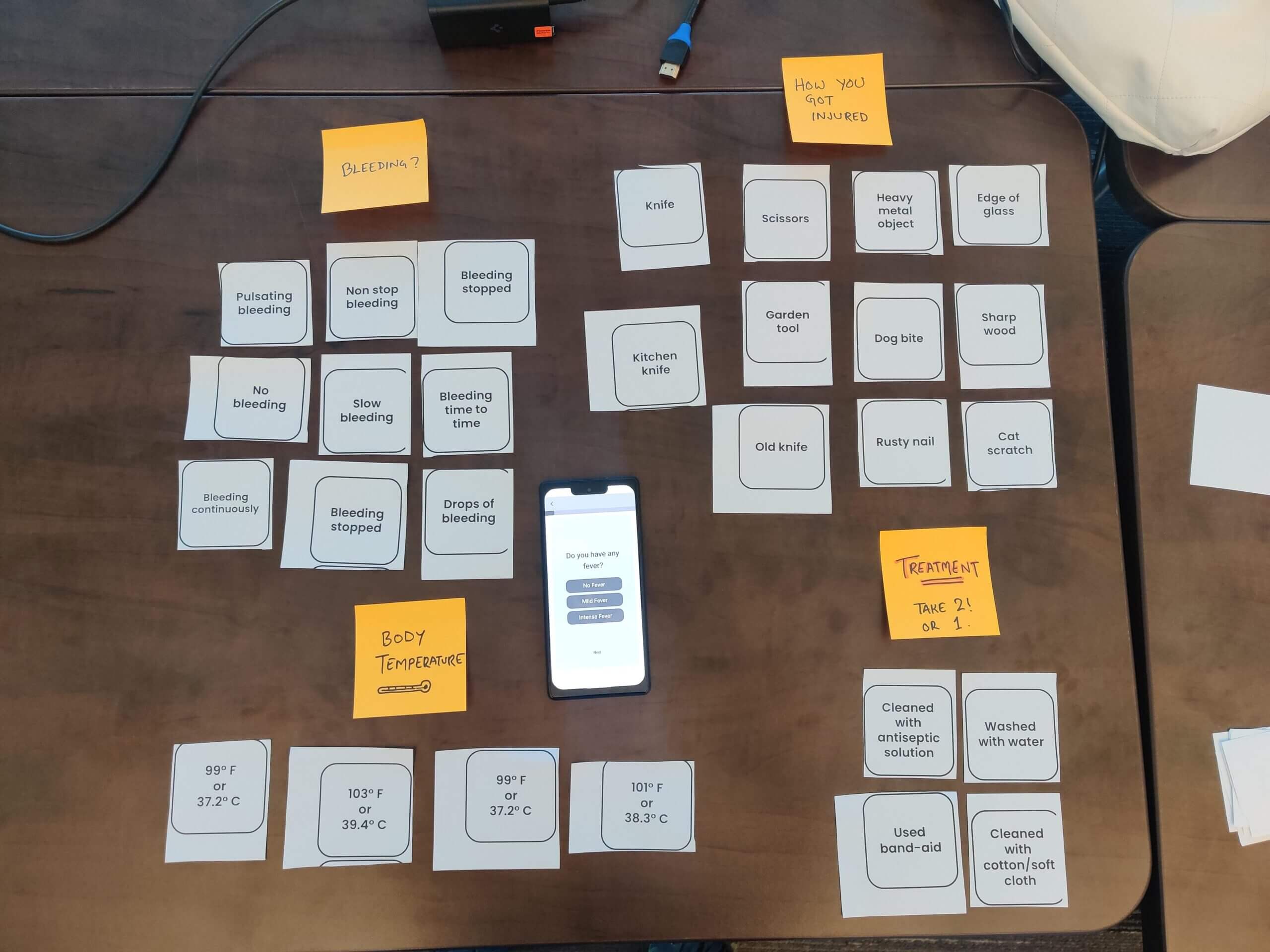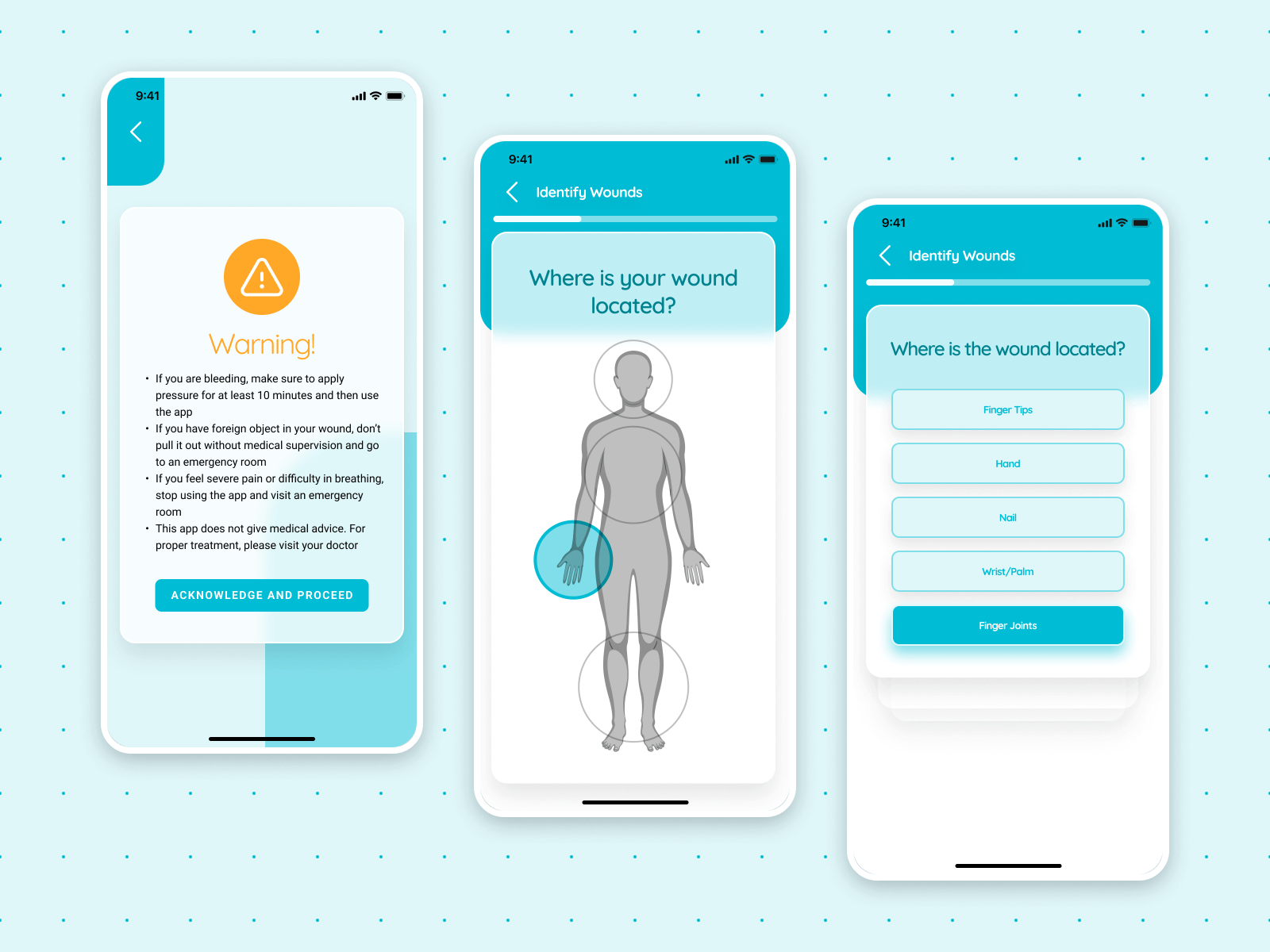Woundification
Digital Wound Identification on Mobile

Overview
Woundification is a mobile wound care application, designed to be practical and educational, and won the hackathon. The idea was conceived at the second annual hackathon event in September. In 2023, This idea was chosen for further design and development by a 6-person team of designers, coders, product managers at The Centre for Digital Media.
The goal of the project is to research and develop a mobile application that enables non-medical people to understand and learn about wound conditions and learn how to seek the right intervention or treatment. This document is a brief overview of the process of research, exploration, iterative design and prototyping to make the idea more mature and ready for the market.
About The Client
Providence Health is one of the largest Catholic healthcare organizations in British Columbia, Canada. It operates 7 facilities including hospitals, care centers, and residences, offering a wide range of health services to the community. Providence Research, the research partner of Providence Health Care, has been established for over 15 years and integrates teaching, knowledge creation, and translation to discover and deliver disease prevention and dramatically improve care.
Impact
A solid and thorough exploration that helped the client evaluate the feasibility of developing the full application
This project also helped them to understand how machine learning, image recognition, and 3D scanning technologies can help elevate the experience as well as how it would impact the development cost.
The client also got a clear overview of the potential points of failure and regulatory issues which may affect the utility of such a product.
My Role and Contributions
Lead UX Designer
- Analyze research findings, prioritize areas for ideation
- Lead ideation sessions, curate ideas, prioritize features and plan design sprints
- Lead wireframe and interface design process
- Author complete design system with layout, colour, typography, and iconography guidelines
- Collaborate with team members to document the process
- Ensure smooth handover to the development team for developing prototypes
Project Co-Manager
- Partner with other project managers on the team to ensure smooth progress
- Maintain line of communication with clients by arranging meetings and documenting discussion points
Methodology and Approach
The team adopted Agile Methodology for this project. The team worked on weekly sprint schedules to meet the project timeline. During the last day of each sprint week, a sprint review and planning meeting was held where the progress of the ongoing sprint and plans for the upcoming week were discussed.
A big portion of my efforts in this project relied on creating a complete understanding of wound care and priorities of different stakeholders. This includes learning about different types of wounds, health complications associated with wounds as well as possible treatments for all types of wounds.
The design phase of the project was riddled with technical challenges that I had to keep in consideration. Each UX solution proposed as part of the design were taken through through technical feasibility assessment.
Key Challenges and Design Solutions
There were some challenges associated with the goal and scope of the project. Here are the challenges and how the team overcame them.
Challenge
Scope of One Stop Wound Care Solution
The initial vision for the application was to create a one-stop wound detection and treatment advising platform for all types of wounds, including acute wounds and slow healing chronic wounds. However, during the research phase the team learned that the detection and treatment vary greatly depending on the types of wounds and patient’s health condition. The duration and the resource allocated for the project proved to be unrealistic to address all these different use cases.
So, the team considered the vertical slice of wounds in patients with comorbidities such as diabetes or heart condition who are facing slow-healing wound conditions and tried to design a solution for their use cases.


CHALLENGE
Scope of One Stop Wound Care Solution
The initial vision for the application was to create a one-stop wound detection and treatment advising platform for all types of wounds, including acute wounds and slow healing chronic wounds. However, during the research phase the team learned that the detection and treatment vary greatly depending on the types of wounds and patient’s health condition. The duration and the resource allocated for the project proved to be unrealistic to address all these different use cases.
So, the team considered the vertical slice of wounds in patients with comorbidities such as diabetes or heart condition who are facing slow-healing wound conditions and tried to design a solution for their use cases.
CHALLENGE
Avoiding Replacing Medical Diagnostic
Although the application was designed to help patients understand their wounds, it was never planned to replace a thorough medical diagnosis. As a result, the UX had to make it clear that users are not to rely on the app for medical diagnosis.
The identification flow was designed specifically to single out risky cases and direct the users towards nearest medical centres.
Design elements
Design System
A UI design guideline was prepared to create the interface of the application. The guideline also served as the basis for future designs.
User interface
Key Screens
I designed a number of key screens which utilized the design elements and provided reference for future design updates.





User Tests
Two rounds of user tests were conducted to validate project findings and design decisions.
- The first round of user test was focused on understanding how effective the UI is for the identification flow. We also wanted to answer what the user expects in the suggestion page after the assessment.
- The second round of user test was an A/B test to come up with a more effective UI for navigating the treatment suggestions and reminders including medicines, nearby hospital locations etc.


Conclusion
Woundification is a concept that has the potential to revolutionize wound care. Through this project, the groundwork for further development has been laid. While the product at its current state is a manual identification and treatment reminder solution, it can be developed further to incorporate smarter wound imaging and identification technologies.





